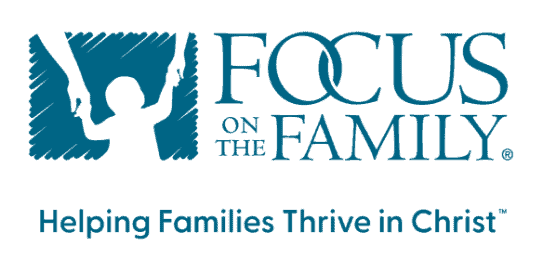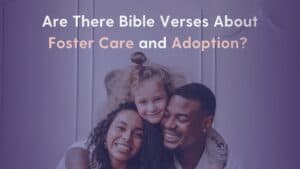What is open adoption? When I was 16, I vividly remember a doctor suggesting adoption for my baby. I barely knew her and felt upset that someone would suggest that I “give away” my baby and never see her again. For those who are experiencing an unplanned pregnancy, this is a common reaction when adoption is brought up. For moms, adoptions isn’t always the right choice, however it is helpful to consider life-giving options to make an informed decision.
I didn’t realize back then that I had a preconceived, limited notion of what adoption was. Most people do. I had family members who were adopted, and they all struggled with their closed adoptions. I couldn’t imagine not knowing my daughter or what she looked like. It hurt to imagine her wondering who and where I was, or if I even loved her (that answer has always been yes!).
Later, I was introduced to open adoption by a few people who walked within this beautifully complex relationship. Their experiences helped open my mind. Through them, I discovered that I had a middle-ground option. I could continue to grow up myself, and provide her with the stable family I felt she deserved. While also continuing to know her and love her through the years and be here to answer her questions.
So What Exactly is Open Adoption?
The Merriam-Webster dictionary defines open adoption as “an adoption that involves contact between biological and adoptive parents and sometimes between biological parents and the adopted child.”
This is a basic definition. An expectant mom is able to talk with prospective adoptive parents (or several!) before making her decision and choose the family with which she feels a connection.
After placement, contact can be through emails, letters, text messages, special apps, FaceTime calls, phone calls, and even in-person visits. Usually, both parties know, at minimum, their first names and communicate either through the agency or directly to one another. But, open adoption is more than simply exchanging names and updates. It is much more than a checklist of updates sent and received.
“Having the ability to ask your birth parents the questions that adoptees in closed adoptions rarely get answered. It means never wondering if you were given up because your birth parents didn’t love you or didn’t want you. It means being able to develop a thorough understanding of how and why you wound up somewhere other than in a home with your biological parents.” – Adoptee, Juliana Whitney
It's a Relationship Mindset
When choosing open adoption, both as a birth parent and as an adoptive parent, it’s an agreement to a relationship. It’s a mindset that takes effort and intention and reaps so many rewards when done well and with love! Open adoption requires thinking about how the other side may be feeling. It involves wanting to know each other as people, and hopefully, as friends. This is a relationship based on honoring and caring for each other, with love for the child at the center of it all. It’s a relationship that keeps the child’s best interest at heart, which often needs biological connections whenever possible.
Sarah has worked with many families during their home study process, including educating them about adoption. She describes to her clients the difference as “closed adoption is transactional while open adoption is relational.”
In my 20 years of experience with open adoption, I have found this relational mindset to be one of the biggest pieces in helping me heal after placement, along with benefiting our daughter at the center. It’s also the number one reason I chose her parents. Her adoptive parents have always helped me to feel seen, valued, and included in their family – not just for the baby that I placed in their arms, but for simply being a child of God. Relationships work when the people matter within them. It’s a give-and-take: wanting to know their heart and perspective, being curious and asking questions, finding compromises and loving each other through the seasons, and allowing space for both sides to support the child they love at the center.
Closed vs Open Adoption
In a closed adoption, there is an exchange of the adopted baby, and that’s it. There is no relationship from the start between biological family and adoptive family. It can, unfortunately, feel more like a business deal–one party gains, and one party experiences loss. It also means that an adoptee’s records are sealed. Family medical history or even names may go unknown. May questions go unanswered for an adoptee as they grow. Adoptees in closed adoptions often seek out DNA testing and searches in an attempted to reunite with birth family later in life.
In an open adoption, however, there is an opportunity to build a strong foundation, including multiple essential people in a child’s life. A biological connection can be so crucial to a child, and open adoption helps make that possible. Jill, an adoptive mom and social worker, adds, “It takes months and years to build that relationship beyond pictures and letters.”
With open adoption, that foundation can be laid while an adoptee is still young and will benefit them when they are older and begin processing their adoption more deeply. When they want to know, “Who do I look like? Where do I get this talent from?” adoptive parents can say, “Let’s call up your birth mom and ask!” For our daughter, those questions began around age ten. Her parents and I had spent ten years building our relationship, so when she began to have more questions and wanted more time to get to know me directly, we were prepared.
For more information on adoption:
It Benefits Multiple People
Thankfully, awareness has risen over the last decade, which has increased traction for the benefits and support for the open adoption option. We certainly need to conduct more studies, but what we have found so far is positive. Open adoption benefits the whole triad’s overall. It helps birth mothers cope with grief and can be very beneficial for adoptees as they grow. For our daughter at the center, it has shown positively in her life to have access to her questions and have biological mirrors of who she looks like and acts like. Each year when she has doctor well visits, she’s always had access to ask me medical questions that may affect her, too.
She’s been able to have the support of both nature and nurture throughout her years. In fact, her parents often call me to ask my advice since she and I are so much alike! It even benefits the children that I parent– their sibling relationship has been equally as important as they’ve grown up together, along with my parents to still be a part of birthdays and milestones in their granddaughter’s life. We all enjoy creating new memories and traditions over the years.
It's Different for Everyone
My open adoption experience can look very different from the birth mother sitting next to me at the yearly retreat, and that’s okay! Open adoption can be thought of as a spectrum. It isn’t all or nothing, and each experience is different. The key is that the door is left open for communication and relationships to grow.
Each adoption triad will have different comfort levels or other factors, such as location, that may change the level of openness. Some have monthly contact, and others agree to contact once a year. Talking through what each side hopes for, having realistic expectations, and having honest conversations helps everyone be on the same page.
It Will Likely Change Over Time
Even within a fully open adoption, there are seasons of less contact or more. In our daughter’s elementary years, we had fewer visits and contact due to each of us growing separate lives– I was getting married and having children, while they were involved with activities taking up time compared to when she was a baby. For many years her parents and I were close and communicated often whether to check in or plan visits. Now that she’s older, she can text me herself to say “hi” and plan our next visit together. We have developed our own friendship and her parents have given us the space to pursue that as she’s grown.
It’s helpful to have conversations over the years to readjust as needed through different seasons and emotional availability over the years with the birth family and the adoptee.
Open Adoption is Not a Co-Parenting Situation
The adoptive family has complete control of parenting and medical decisions. They also have a say in if and when visits will happen. A birth parent knows that they have signed those rights away and aims to respect that boundary.
However, it can be beautiful to include the birth family, much like extended family, inviting them into decisions together when possible. From big milestones like birthday parties and graduations to everyday moments like a day at the park, it can be helpful for birth parents and the adoptee to celebrate and create memories with you as a family.
Open Adoption is Not Confusing to The Child
Think of it as a blended family. I grew up with a mom and a step-mom that I’ve known since I was 18 months old. I’ve always known I’ve had two moms. One is biologically related, and one is not. One I look like, the other I don’t what-so-ever. However, I love them each just as dearly. Both offer different perspectives and unique places in my heart.
In the same way, my birth daughter knows and loves me along with her mother. As an adult, she seeks each of us for different reasons. Her parents did a fantastic job discussing her adoption and my role in her life from the very beginning. Having me in her life is normal to her because I’ve always been a familiar face and in their conversations. It has only brought her clarity, not confusion.
“I have never felt as though I have two sets of parents. I have one set of parents and I have one set of loving people who gave me life and cared about my well-being so much that they relinquished my to a couple of parents who could provide me with an even better life.” – Julianna Whitney
For me, open adoption visits and updates are a balm to my heart wound. They help me to heal and reassure me of my decision. Each time we got to play together or I heard an update, it helped me to see that she was thriving, loved and happy. Her adoptive parents did an incredible job loving me well throughout our journey and including me as much as possible. It helped me to feel valued, too.
It’s also helped our daughter to have safe places to wrestle with her questions or connect when she’s missing us, too.
It's Beautiful But Complex
Open adoption is so many things rolled into one–beautiful and heartbreaking, joy and grief. It is often setting aside our feelings to focus on our child’s best interest. It is where the great moments outweigh the hard ones. And for me, it’s a path I’m still proud to be navigating 20 years later. I check in with our daughter about how she’s feeling about her adoption too, and she feels the same way.
“Having an open adoption is important for my self discovery, especially as I move into adulthood. Without having both sides available to me, I would feel lost.” – Kaylee, Leah’s birth daughter.
Most of all, open adoption is being open-hearted to what God has for everyone involved. It’s being open to more love.



















